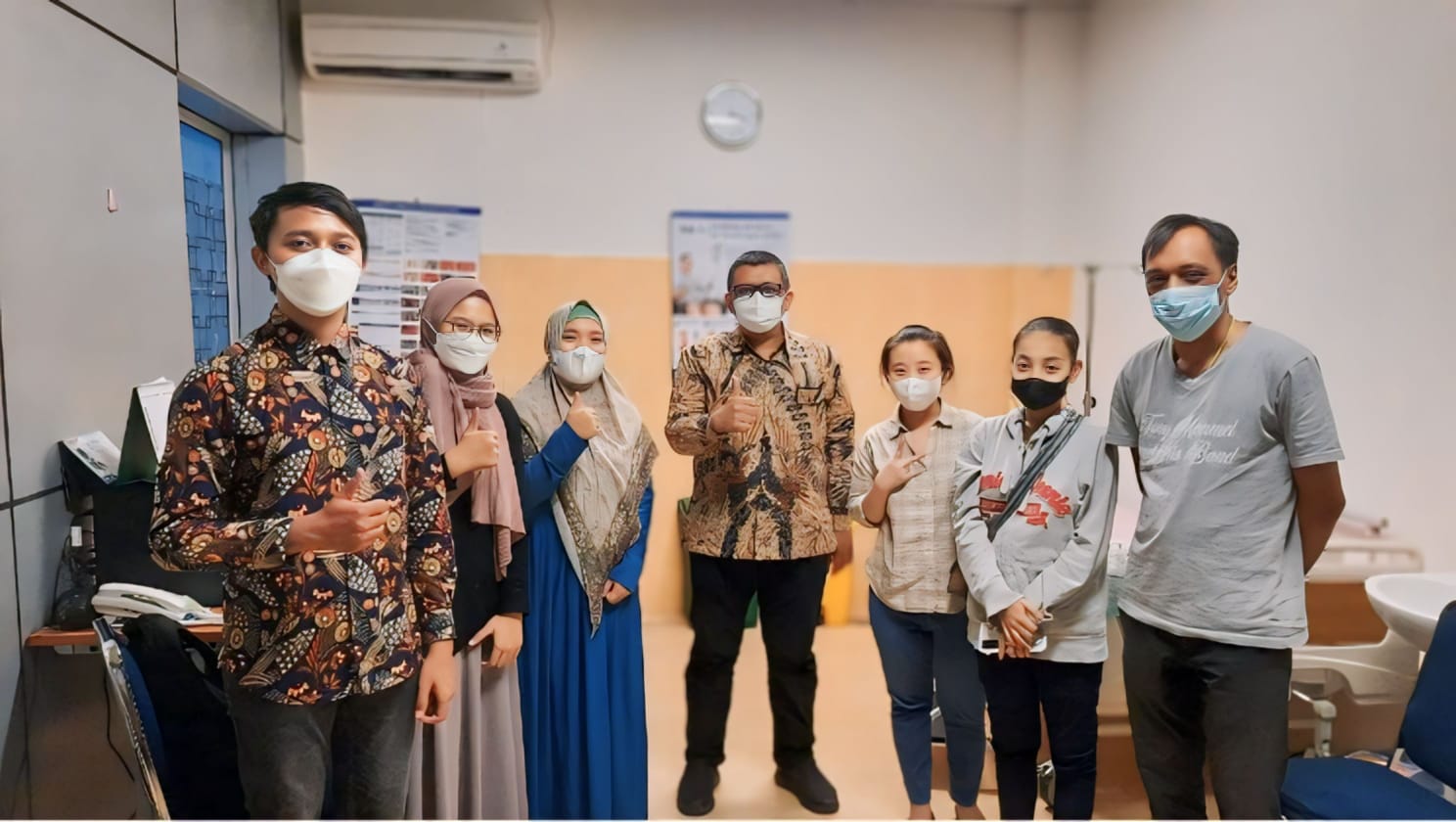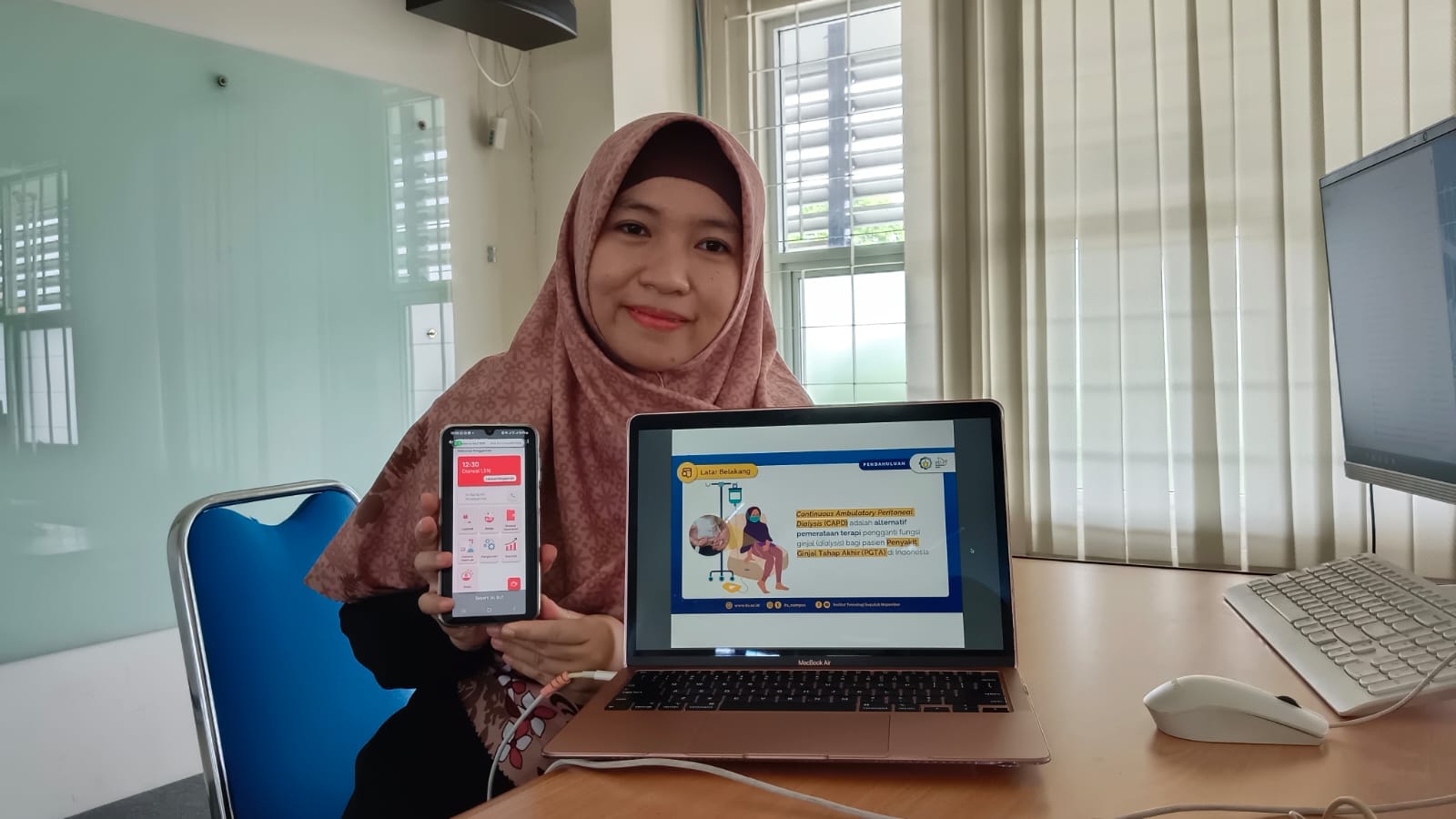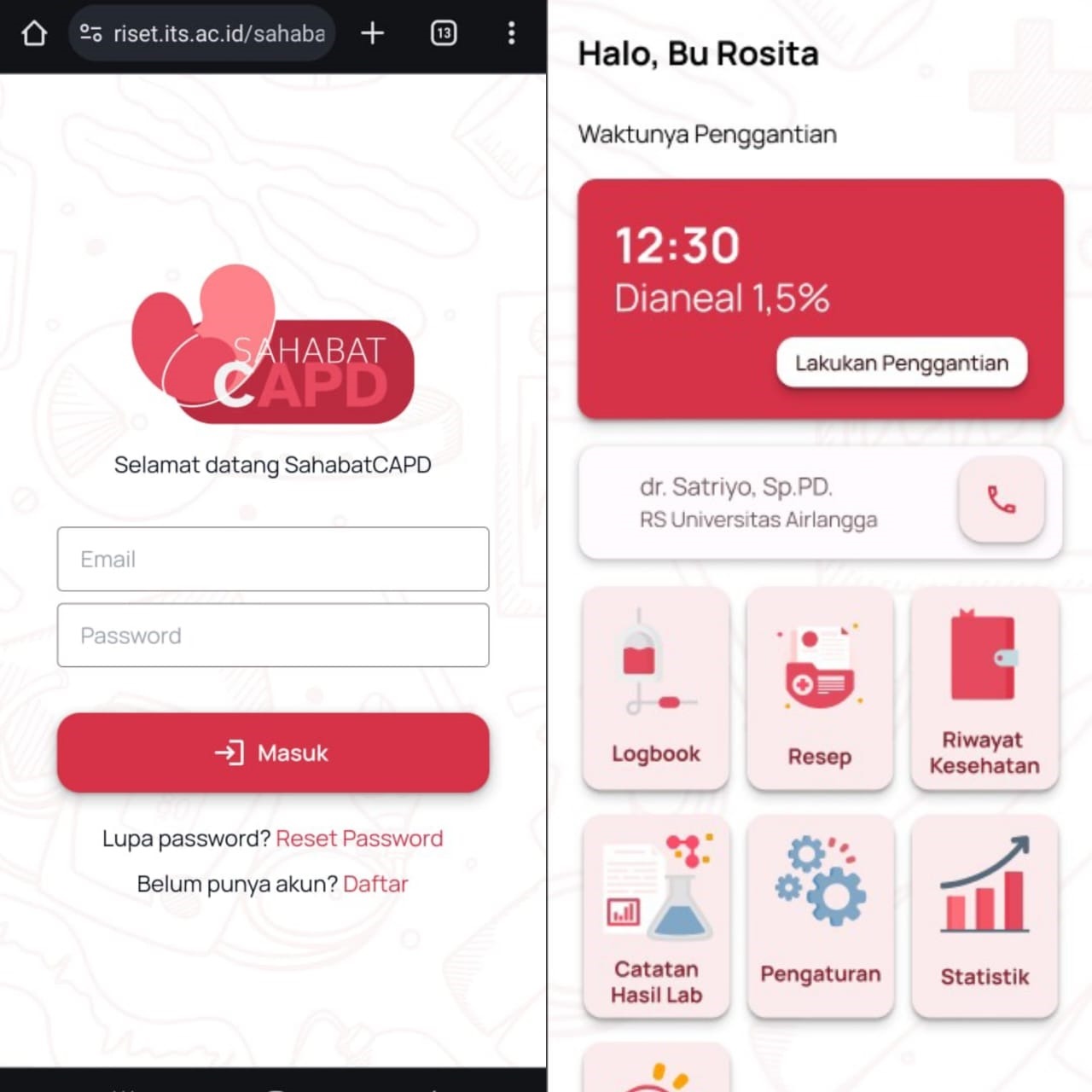ITS Collaborates to Develop Chronic Kidney Disease Patient Monitoring Application

Dini Adni Navastara SKom MSc (third from the left) with the ITS research team and Dr. Satriyo Dwi Suryantoro SpPD (center) after testing the SahabatCAPD application at RSUA
Kampus ITS, ITS News — Institut Teknologi Sepuluh Nopember (ITS) continues to foster collaborations to create technological innovations in the field of healthcare. This time, ITS has partnered with the Airlangga University Hospital (RSUA) in developing the breakthrough SahabatCAPD application, an intelligent solution to facilitate doctors in monitoring chronic kidney disease patients undergoing Continuous Ambulatory Peritoneal Dialysis (CAPD) therapy.
Ketua tim peneliti, Dini Adni Navastara SKom MSc menjelaskan, inovasi ini berawal dari gagasan kreatif mahasiswa ITS yang berpartisipasi dalam Program Kreativitas Mahasiswa (PKM) tahun 2021 lalu. Sebagai dosen pembimbing dalam tim, perempuan yang kerap disapa Dini ini melihat potensi besar dalam ide tersebut untuk meningkatkan sistem pemantauan dan pengelolaan kondisi pasien gagal ginjal kronis. “Namun, anggota tim mahasiswa tersebut saat ini telah menyelesaikan studinya di ITS,” ungkapnya.
Not wanting to end the development of their innovation, the lecturer from the ITS Department of Informatics decided to continue the research in the development and refinement of the application, including incorporating deep learning technology into it. The choice of this technology is based on previous research showing the success of deep learning in diagnosing medical conditions through imaging. “Nevertheless, there hasn’t been specific deep learning-based research related to CAPD for detecting complication risks using effluent dialysate,” Dini added.

Dini Adni Navastara SKom MSc shows the display of the SahabatCAPD application as a system for early detection and monitoring of the risk of complications in patients with chronic kidney failure
Through the application of deep learning, Dini continued, this application has the potential to recognize complex patterns and interpret waste fluid data more accurately, thereby allowing for better detection of potential complications. Additionally, the application is equipped with more comprehensive complaint features, providing additional information to doctors to facilitate a more comprehensive patient development diagnosis.
According to Dini, this further research is inseparable from RSUA’s involvement in optimizing the utilization of relevant patient data to improve the accuracy and effectiveness of the application. With this collaboration, it is hoped that the SahabatCAPD application can be tested and adjusted more precisely according to the needs of chronic kidney disease patients undergoing CAPD therapy in the hospital environment. “Furthermore, patient data collection will be conducted continuously to adjust the validation results from the hospital,” said the alumnus of Pusan National University, South Korea.

One of the ITS research team (center) demonstrating the use of the SahabatCAPD application to a team of doctors from Unair Hospital (RSUA)
All the recording, detection, and monitoring features developed within this application and research aim to reduce cases of undetected complications in chronic kidney disease. This is because 16 percent of the risk of patient mortality in CAPD therapy is caused by complications due to negligence, technical errors, and mistakes in patient monitoring. “This research also targets the evaluation of the performance of various deep learning models that have been developed previously,” she added.

Tampilan awal dan tampilan utama dari aplikasi SahabatCAPD, hasil pengembangan tim peneliti ITS
Reporter: Lathifah Sahda
Related News
-
ITS Wins 2024 Project Implementation Award for Commitment to Gender Implementation
ITS Campus, ITS News —Not only technology-oriented, Institut Teknologi Sepuluh Nopember (ITS) also show its commitment to support gender
April 01, 2024 11:04 -
ITS Professor Researched the Role of Human Integration in Sustainable Architecture
ITS Campus, ITS News –The developing era has an impact on many aspects of life, including in the field
April 01, 2024 11:04 -
ITS Sends Off Group for Joint Homecoming to 64 Destination Areas
ITS Campus, ITS News — Approaching Eid al-Fitr, the Sepuluh Nopember Institute of Technology (ITS) is once again facilitating academics who want
April 01, 2024 11:04 -
ITS Expert: IHSG Decline Has Significant Impact on Indonesian Economy
ITS Campus, ITS News — The decline in the Composite Stock Price Index (IHSG) by five percent on March 18,
April 01, 2024 11:04
